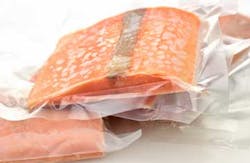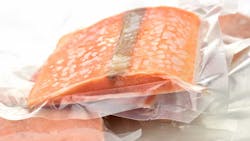A new report from market research firm The Freedonia Group has revealed that the U.S. meat, poultry and seafood packaging market will be driven by increased demand for flexible solutions, ready-to-eat packaging and poultry packaging applications over the years until 2017.
Overall, the U.S. packaging industry is predicted to increase by an average annual rate of 3.2 percent, from $8.2 billion in 2012 to $9.7 billion in 2017. The report, "Meat, Poultry and Seafood Packaging," states that demand for flexible packaging is set to exceed that for rigid packaging, especially in categories like pouches and high barrier films. On the one hand, flexible packaging is preferred by consumers because it is more convenient, but on the other hand it is also more ecologically friendly due to the fact that it requires less material to be manufactured. Moreover, flexible packaging costs significantly less to ship compared to rigid packaging, the report noted.
The rigid packaging market will be restricted by other factors as well. The market in the United States is quite mature, which suggests that it is hard to gain new market share. Rigid packaging such as metal cans, corrugated boxes, folding cartons and paperboard sleeves also loses out to flexible alternatives in different aspects of performance, The Freedonia Group pointed out.
The fastest growth is expected to come from poultry packaging applications over the coming years, as experts believe that poultry consumption will rise for years to come. Generally, poultry is considered to have a positive nutritional profile and is marketed at a lower cost. Because of growing sales of poultry, various packaging applications will also experience a steep increase, the report predicted.
RELATED: Global beverage packaging market to reach $118.8 billion by 2017
Other meat, however, will remain the largest application by 2017, although it is likely to grow at a much more modest rate compared to poultry and sales will be close to the average rates. As far as seafood applications are concerned, their performance will improve from the period between 2007 and 2012 but growth will remain below average. The main reason for this is the high proportion of imported seafood products on the U.S. market.
As modern lifestyles force consumers to try to save time and money, demand for ready-to-eat products will also rise. Various options for takeaway prepared food will drive sales of packaging applications upward, the researchers said. The fastest growth in this market segment will be recorded in the fresh and frozen market, where case-ready packaging and MAP (modified atmosphere packaging) will be the biggest winners. Thanks to their excellent retention properties, MAP and case-ready packaging contribute to extended shelf life of products like meat, seafood and poultry.
The packaging market will also benefit from the ongoing demand for single portion and smaller sized products, which has been developing over the past few years as a reflection of the increasing number of one- and two-person households in the United States, the report said.

